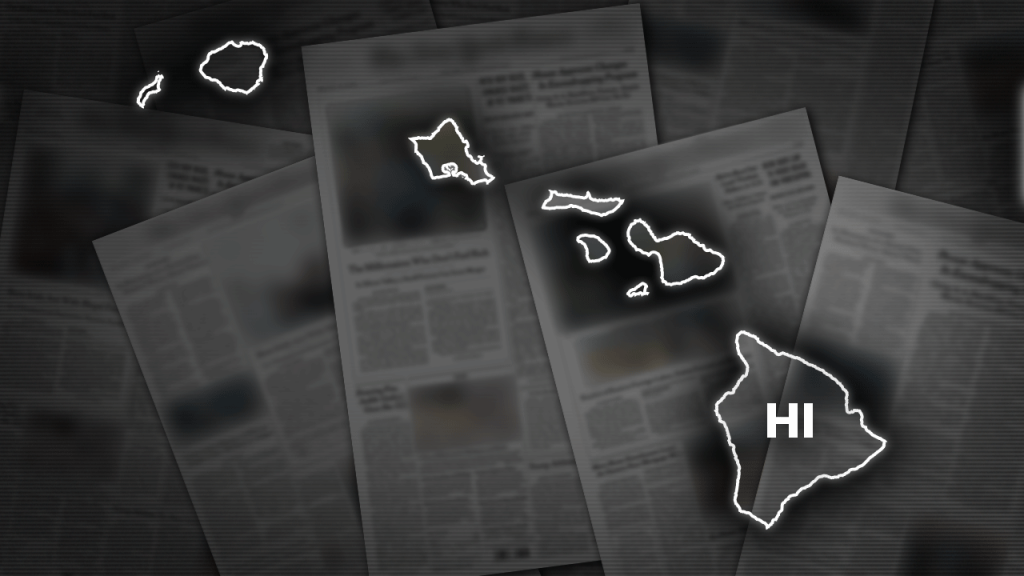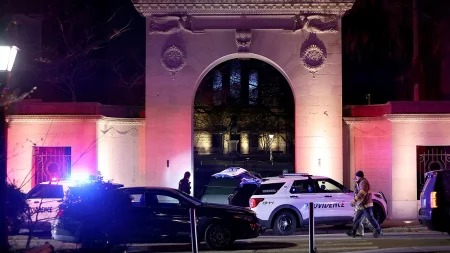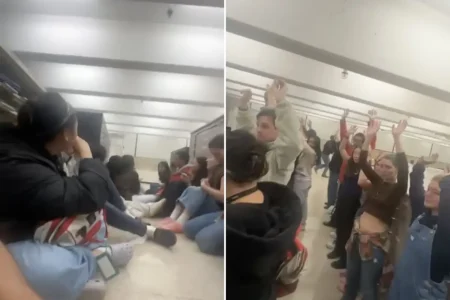On Tuesday, July 26, 2024, tragedy struck Honolulu’s Daniel K. Inouye International Airport when a small cargo plane, Kamaka Air Flight 689, crashed into a vacant building shortly after takeoff, resulting in the death of both pilots onboard. The single-engine Cessna 208, en route to Lanai Airport in Maui County, encountered a critical malfunction shortly after departure, leading to a swift and devastating crash. The incident unfolded around 3:15 p.m. local time, sending a thick plume of black smoke billowing into the sky above the airport.
Emergency responders swiftly arrived at the scene, working to contain the flames that engulfed the aircraft and the building it struck. Fortunately, the building was unoccupied, preventing further casualties. The Honolulu Fire Department confirmed that no other individuals sustained injuries in the incident. The two pilots, identified by family members as Hiram Defries and Preston Kaluhiwa, both graduates of prestigious local high schools, were the sole occupants of the aircraft. Their untimely deaths sent shockwaves through the tight-knit aviation community and the wider Hawaiian Islands.
The incident immediately triggered a multi-agency investigation, with the Federal Aviation Administration (FAA) and the National Transportation Safety Board (NTSB) taking the lead. Their primary objective is to ascertain the precise cause of the crash and prevent similar occurrences in the future. Preliminary investigations will focus on various aspects, including mechanical failure, pilot error, and any potential contributing environmental factors. The recovered flight data recorder, commonly known as the “black box,” will play a crucial role in providing insights into the moments leading up to the impact. Investigators will analyze the recorded conversations between the pilots and air traffic control, as well as data related to the aircraft’s performance and systems.
Audio recordings from the air traffic control tower reveal the harrowing final moments of the flight. The pilots communicated their desperate struggle to maintain control of the aircraft, indicating a sudden and severe malfunction. The control tower attempted to guide them towards a safe landing, offering any available runway, but the pilots’ repeated pronouncements of being “out of control” underscore the rapid deterioration of the situation. The crash occurred shortly after their final communication, leaving no time for emergency procedures to be implemented.
Kamaka Air, a local freight delivery company serving individuals and businesses throughout the Hawaiian Islands, expressed profound grief over the loss of their two pilots. CEO David Hinderland addressed the media, confirming the identities of the deceased and extending condolences to their families. He praised the pilots’ dedication and professionalism, highlighting the devastating impact of their loss on the company and the wider community. The company pledged full cooperation with the ongoing investigation, emphasizing their commitment to safety and transparency.
The tragic crash of Kamaka Air Flight 689 serves as a stark reminder of the risks inherent in aviation, even on seemingly routine training flights. The investigation will undoubtedly be thorough and complex, aiming to shed light on the specific factors that contributed to this devastating event. The findings will be instrumental in informing future safety protocols and preventing similar tragedies from occurring. The loss of the two young pilots represents a profound loss for their families, the Kamaka Air family, and the Hawaiian aviation community. Their memory will serve as a catalyst for continued vigilance and unwavering dedication to safety in the skies.











